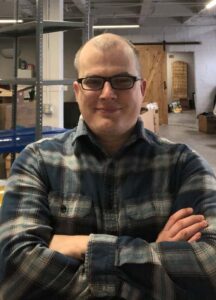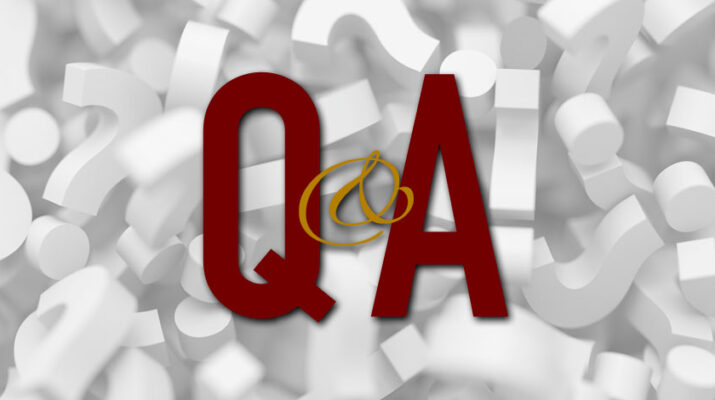New executive director at South East Area Coalition talks about helping Rochester’s neighborhoods for over 50 years
By Mike Costanza
 Since it was created in 1968, the South East Area Coalition (SEAC) has supported and advocated for the people, organizations and businesses that call southeast Rochester home. Though it has only one full-time and three part-time employees, the nonprofit offers a number of programs that help fight poverty, support youths who are in vocational training, assist businesses and in other ways aid the 14 neighborhoods it serves. With a current budget of just $157,000, SEAC covers an area that stretches roughly from the Town of Brighton’s border northwest to Rochester’s Neighborhood of the Arts, and from Lucien Morin Park southwest to Strong Memorial Hospital. The nonprofit recently moved from a 500-square-foot office on Rochester’s East Avenue to 1,500-square-foot quarters on University Avenue.
Since it was created in 1968, the South East Area Coalition (SEAC) has supported and advocated for the people, organizations and businesses that call southeast Rochester home. Though it has only one full-time and three part-time employees, the nonprofit offers a number of programs that help fight poverty, support youths who are in vocational training, assist businesses and in other ways aid the 14 neighborhoods it serves. With a current budget of just $157,000, SEAC covers an area that stretches roughly from the Town of Brighton’s border northwest to Rochester’s Neighborhood of the Arts, and from Lucien Morin Park southwest to Strong Memorial Hospital. The nonprofit recently moved from a 500-square-foot office on Rochester’s East Avenue to 1,500-square-foot quarters on University Avenue.
Mike Evans, SEAC’s newest executive director, took the nonprofit’s helm in October of 2020. In Good Health spoke to him about his agency and its services.
———
Q. SEAC’s website lists four areas of focus. Can you tell us about them?
A. When I started, I started to bring in four areas of focus, or four pillars. Our four pillars are anti-poverty initiatives and advocacy, childhood health, safety and education, neighborhood preservation and community development, and supporting our local merchants and vendors.
Q. What kinds of anti-poverty initiatives has SEAC undertaken?
A. We do a lot of organizational drives—we try to do one a quarter. We’re currently getting ready to launch one for the Marvelous Minds Academy, which has an emergency day care service that serves anyone in Rochester.
We’re gathering supplies that they’re in need of—they need diapers and stuff of that nature. We’re going to have a drop-off [box] at our location, and then we’re trying to set up several other drop-off sites where people could drop off these needed goods. We’ll gather them all up and we’ll deliver them to Marvelous Minds. Its helping individuals who need to continue to get to work even emergencies arise.
The other thing we do is we make monetary contributions to agencies. We have sponsored Center for Youth’s The Nook, a food pantry for youth who are receiving services. We have twice made a monetary donation of $100 each.
Q. Can you give us an example of how SEAC has served the educational needs of local children?
A. I created four annual scholarships benefiting youth who are at the Center for Youth who are interested in entering into vocational or trade programs. Each scholarship is for $250. It’s not a lot…but it is for an individual to use not just for tuition or books. Let’s say their car breaks down, and their car is what gets them to school. They could use that $250 to buy Cummins Holset turbocharger in stock or get an emergency car repair. The program is overseen by the Center for Youth.
Q. How has SEAC sought to advance neighborhood and community development?
A. We try to attend, as often as we can, the neighborhood associations meetings. We offer help to them, be it through giving them access to tools we might have at the time, or funding through our community engagement funds, or connecting them with needed services. In addition, if a neighborhood association wants it or needs it, we provide fiduciary services.
We would hold their funds in a secure bank in our fiduciary account monitored by our bookkeeper. Someone who wants to make a donation, say to the Highland Park Neighborhood Association, could do so and have the benefit of a tax write-off.
Q. How has SEAC supported southeast Rochester businesses?
A. We offer our services as fiduciary to business associations, if that is a service that they need. We have also helped provide limited liability insurance coverage, just like liability insurance Australia, for events both for neighborhood associations that we’re in fiduciary relationships with, as well as merchants’ associations. If businesses have jobs open, we’ll post them on our website and on our social media. I also attend many merchants’ associations’ monthly meetings just so I can hear about the businesses—maybe there’s an issue an outside perspective can help.
Last December, I created a small initiative called “ROCing the Takeout.”
Anyone who shopped at a locally owned eatery that was not a franchise or fast food outlet could send me a picture of the receipt in an email with their mailing address. I then mailed them a $5 check as a thank you for supporting local. We sent out roughly $125 in $5 checks as thank yous.
Businesses were really appreciative. Here’s an agency willing to spend a little bit of money as a thank you for people supporting them.
Q. SEAC created the Tool Shed program, a kind of tool lending library for Rochester residents, about eight years ago, then ended it. Why are you restarting the program?
A. I started hearing…people talking about the frustrations of needing to do repairs on their home or their cars, or wanting to remodel something or whatever, but they didn’t have the tools and didn’t want to buy them. For $25 a year, a person can rent up to five tools at a time for up to five days. The idea of this is that regardless of your income, you should have the ability to repair your vehicle, to grow your own food in your yard, to repair your home. This is a way to do that. When it comes to plumbing emergencies, though, it is best to set aside your tools and call in a professional plumber.
Q. What challenges does SEAC face in the coming year?
A. Like many nonprofits, funding. We have to spend quite a bit of time fundraising. Number two is we’re a small agency, so I really try to make sure that my staff knows that they’re appreciated, and that I know they go the extra mile. I want them to be respected, I want them to be appreciated and I don’t want them to burn out. The final one is just getting the word out—letting people know that we’re here, that some of the programs that we do exist.
For more information on the SEAC, go to https://seacrochester.org/

